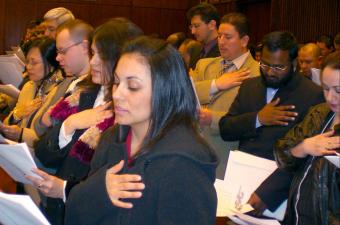Integration Policy
Recent Activity
This discussion focuses on the MPI report, "Executive Action on Immigration: Six Ways to Make the System Work Better," which outlines administrative actions that can be implemented to improve the immigration system.
In the absence of new U.S. immigration reform legislation, this report examines the opportunities that exist within the executive branch and the administration to refine and strengthen current U.S. immigration laws and policies. The administration can exercise its authority to field policies, programs, and procedures that are effective and fair in advancing the goals of the U.S. immigration system.
The global economic downturn and rising debt levels in all European countries have put immigration at the forefront of many debates surrounding public spending. This report presents a diversity of findings with regard to European governments' responses to immigrant integration organization, financing, and programs.
This book takes stock of the impact of the crisis on immigrant integration in Europe and the United States. It assesses where immigrants have lost ground, using evidence such as levels of funding for educational programs, employment rates, trends toward protectionism, public opinion, and levels of discrimination.
Repealing birthright citizenship for U.S.-born children of unauthorized immigrants, a step discussed in some circles as a means to reduce illegal immigration, would significantly increase the size of the unauthorized immigrant population in the United States, from 11 million today to 16 million by 2050, this brief reveals.




